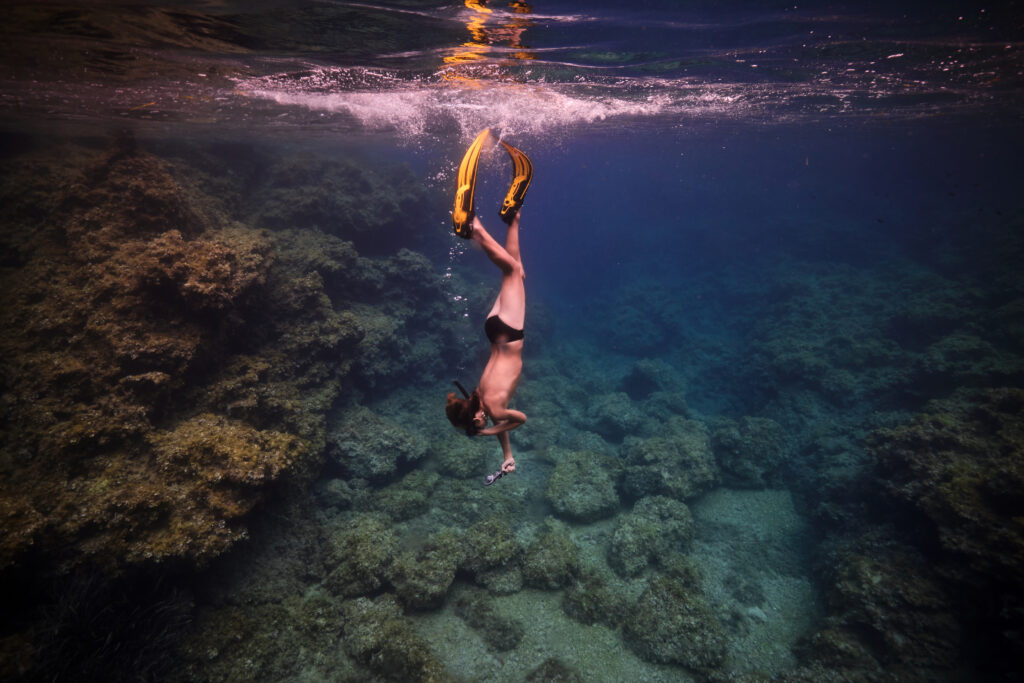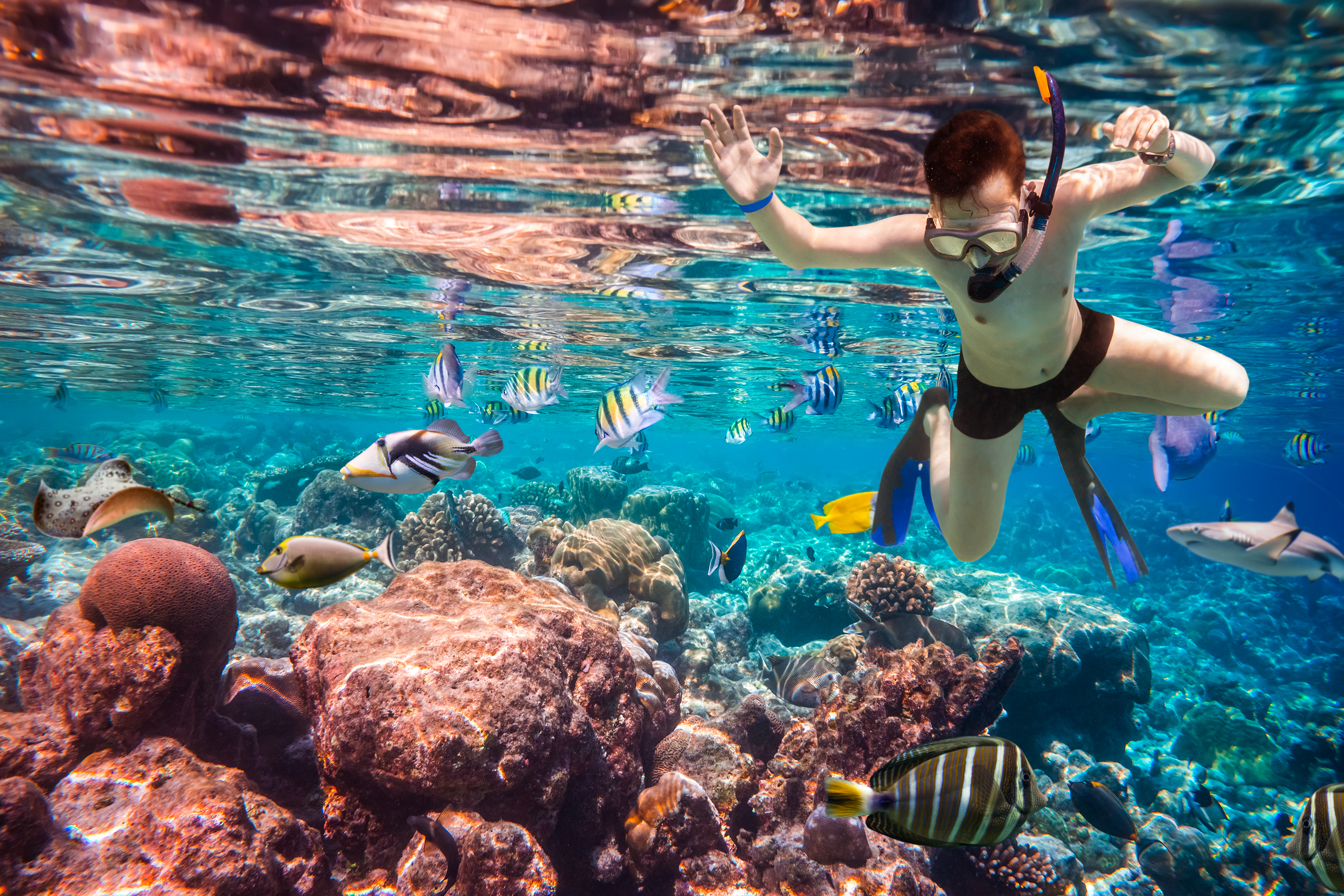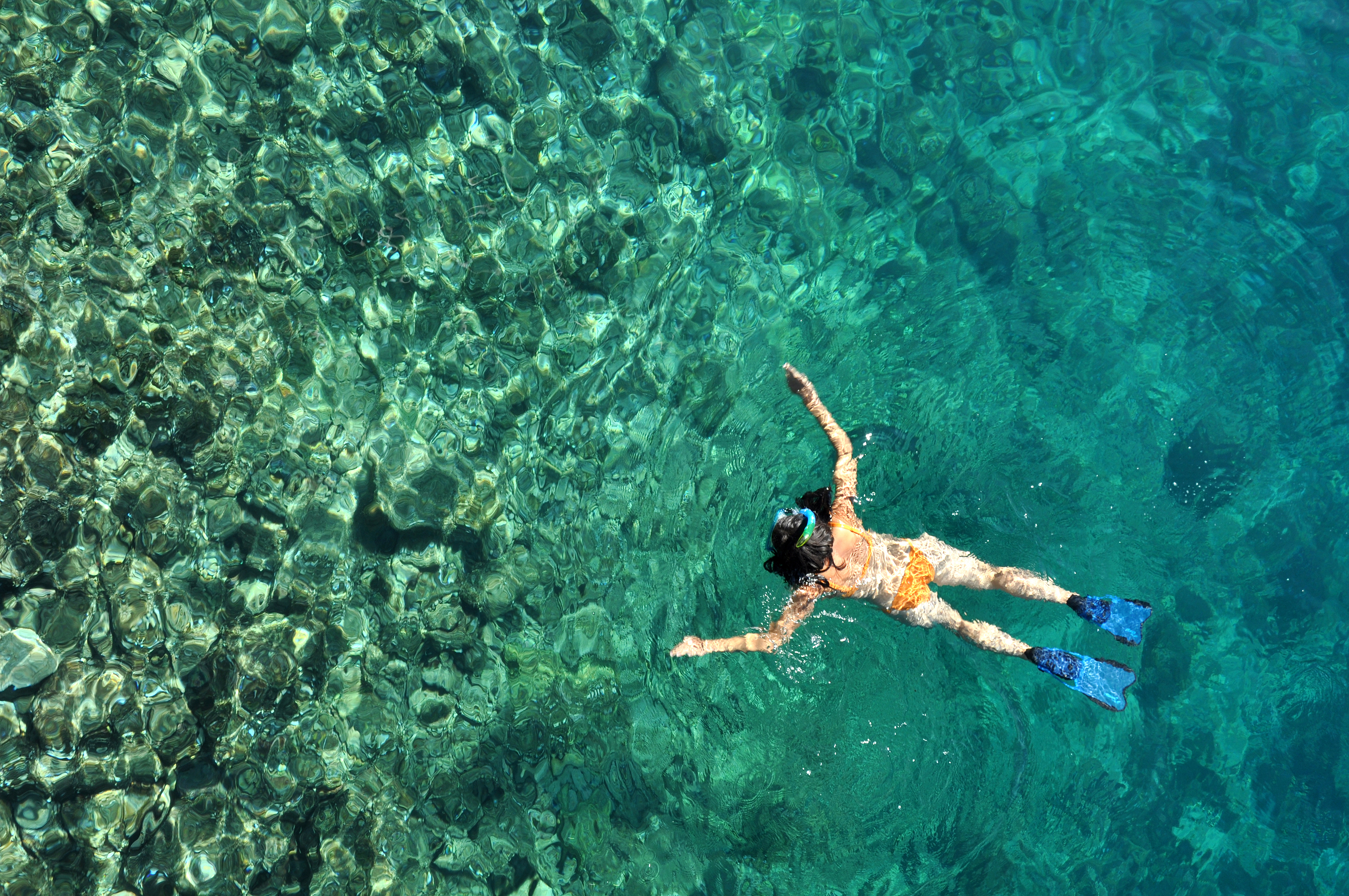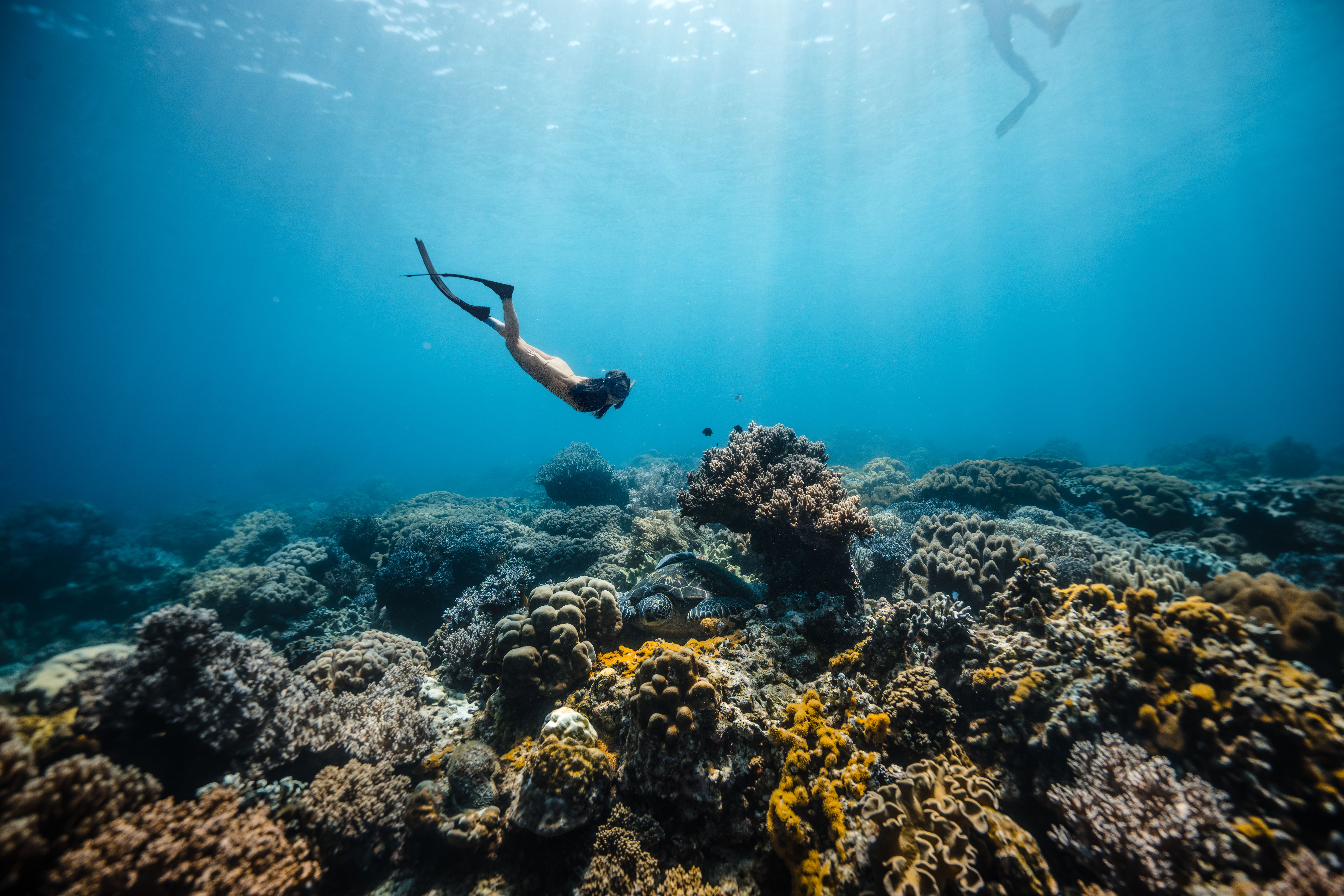For many water enthusiasts, exploring the underwater world is a spellbinding experience that offers a glimpse into a realm teeming with vibrant marine life and enthralling seascapes. Two of the most popular ways to engage in ocean exploration are freediving and snorkeling. While both activities immerse you in aquatic adventures, they are distinctly different in terms of technique, equipment, and the overall experience.
In this article, we’ll dive into the underwater sports of freediving and snorkeling, comparing their differences and helping you decide which water activity might be best suited for your next aquatic adventure.

Understanding Freediving
Freediving, also known as apnea diving, is the art of diving underwater on a single breath without the use of breathing apparatus. It’s not only a physical pursuit but also a mental one, requiring divers to train their bodies and minds to withstand the pressure of the depths and the challenge of limited oxygen.
The Essence of Freediving
Freediving is about connecting with the underwater environment in the most natural and unobtrusive way possible. It’s often described as a meditative and introspective activity. Freedivers must learn to control their breathing, heart rate, and movements to conserve oxygen and stay underwater longer.
Equipment Used in Freediving
To freedive, you’ll need a few specific pieces of equipment:
- Fins: Freediving fins are longer than snorkeling fins, providing more propulsion with less effort.
- Mask: A low-volume mask is preferred as it requires less air from your lungs to equalize the pressure as you descend.
- Snorkel: A simple J-shaped snorkel is used at the surface to breathe up before a dive.
- Wetsuit: A streamlined wetsuit helps with buoyancy control and protection from the cold.
- Weight Belt: A weight belt assists in counteracting buoyancy to make descending easier.
Training and Safety
Freediving requires comprehensive training to safely manage breath-holding and pressure changes. Safety is paramount, and it’s crucial to never freedive alone. Buddying up with an experienced diver and understanding the risks involved is essential for a safe freediving experience.

The Joy of Snorkeling
Snorkeling, on the other hand, is a leisurely activity that allows you to observe marine life from the surface of the water. It’s accessible, easy to learn, and suitable for all ages, making it a popular choice for families and casual water explorers.
Snorkeling: A Relaxing Water Activity
The relaxed pace of snorkeling makes it an ideal activity for those who want to enjoy the ocean’s beauty without the intensity of a deep dive. It’s perfect for observing coral reefs, schools of fish, and other shallow-water marine life.
Snorkeling Gear
Snorkeling equipment is simple and easy to use:
- Fins: Shorter fins provide enough thrust to easily maneuver on the water’s surface.
- Mask and Snorkel: A comfortable mask and snorkel let you breathe while floating face-down, watching the underwater world.
- Flotation Device: For those who are not strong swimmers, a life jacket or flotation belt can provide extra buoyancy.
Learning to Snorkel
Snorkeling requires minimal training. Essentially, it’s about learning how to use the snorkel to breathe while floating on the surface and clearing water from the snorkel if needed. It’s an accessible activity that doesn’t require the intense physical and mental discipline of freediving.
Freediving vs Snorkeling: Key Differences
While both freediving and snorkeling share the commonality of immersing you in the underwater realm, they cater to different interests and skill levels.
Depth and Duration
The most obvious difference is the depth and duration that each activity allows. Freedivers train to go deep and stay underwater for several minutes, while snorkelers remain on the surface with unlimited access to air.
Training and Technique
Freediving requires in-depth training to safely manage the body’s responses to underwater pressure and limited oxygen. Snorkeling requires far less technical skill and is more about comfortably floating and observing.
Equipment Needs
Freediving gear is specialized to support deeper dives and longer duration underwater. Snorkeling gear is designed for surface-level exploration, making it less technical and generally more affordable.
Physical and Mental Demands
Freediving is a physically demanding sport that also requires mental fortitude and discipline. Snorkeling is less physically intensive, offering a more relaxed and casual experience.

Choosing Your Underwater Adventure
When deciding between freediving and snorkeling, consider what you want to get out of your aquatic experience. Are you seeking the thrill of diving deep and challenging your limits, or are you looking to leisurely explore and enjoy the marine scenery?
Consider Your Comfort Level and Fitness
Your swimming skills, comfort in the water, and physical fitness will play a significant role in determining whether freediving or snorkeling is right for you.
Assess the Environment
The environment you’ll be exploring can also dictate your choice. Freediving is best suited for clear, calm waters where depth is accessible. Snorkeling can be enjoyed in a variety of conditions, including shallow reefs and coves.
Personal Preference and Goals
Ultimately, your personal preference and goals for underwater exploration will guide your decision. Whether you’re drawn to the challenge of freediving or the ease of snorkeling, both offer unique ways to connect with the ocean.
Safety First in Underwater Sports
Regardless of whether you choose freediving or snorkeling, safety should always be your top priority. Never venture into the water alone, be aware of your surroundings, and respect the ocean and its inhabitants.
Conclusion
Freediving and snorkeling are both exhilarating water activities that open up the wonders of the underwater world. While freediving offers an intense, immersive experience that pushes the boundaries of human capability, snorkeling provides a relaxed and accessible way to enjoy the ocean’s beauty.
By understanding the differences between these two underwater sports, you can make an informed decision about which aquatic adventure suits your interests, abilities, and goals. Whichever path you choose, the ocean awaits with its boundless mysteries and enchanting marine life. Happy exploring!


